THE
MORAYSHIRE BRANCH
ALEXANDER FINDLATER,
DYKE
Alexander Findlater appears
as the husband of Christian, daughter of Alexander Brodie of Brodie, whom he
married at Dyke (the English word for Brodie) on 5 November 1665. He is described
as ‘Gardiner of Brodie’ and his guarantor is John Findlater. When
the Laird died in 1680, James Brodie his son notes in his diary that with his
wife and with Alexander Findlater he laid out his father’s body.
Although Alexander is described
as gardener, this does not necessarily denote a servile status as this was an
occupation which was highly regarded, just like that of mason, and indeed the
Milnes, Kings’ Masons, were knighted. William Burness, father of the poet
Robert Burns was a gardener, but his first cousin was a Writer to the Signet.
James, born 1670, the third
son of Alexr and Christian Brodie married Cecilia Home and became a merchant
in Forres. He had three sons, William became a Burgess of Banff, James went
to Jamaica and George went to Aberdeen.
William, born 1678, the
fifth son of Alexr and Christian Brodie married Christian Waxter and stayed
in Dyke, having two children, Margaret born 1700, and David born 1713. One assumes
that as the elder sons had all moved away, it was he who carried on from his
father in Dyke.
His younger brother
George,
born 1688, married Anna Fyfe. See the Findlater Sisters
for their descendants.
The way in which people
moved about the North East of Scotland is well illustrated by the moves of George
Findlater, eighth son of Alexr & Christian, who was based at
various times in Old Aberdeen, Elgin, Peterhead and New Aberdeen.
Christian Brodie is stated
in a family bible to have had ‘a large family of sons, some of whom settled
in the North and others went to the West Indies to settle’ so she cannot
have been of very advanced years. The last record of a birth
to this family is Joseph II in 1696. If Christian Brodie was born in 1635 she
would have conceived him at the age of 60. Therefore it must be assumed that
she died and that her husband remarried. In fact a stray Alexander Findlater
married Jean Davidson at St Nicholas Aberdeen on 26th July 1683, slightly over
a year before the birth of his son Robert in December 1684.
THE FIRST OF THE MINISTERS
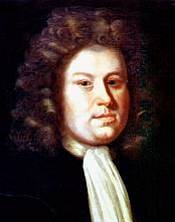
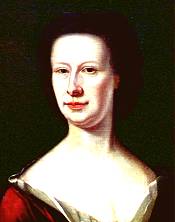 The
eldest child of Alexr Findlater and Christian Brodie was Revd Alexander, Minister
of Hamilton, who was born in 1666. Coming from a family of twelve, he himself
had a family of ten, with one or two by-blows as well. He married well, Jean
the daughter of Revd Thomas Kirkcaldy, the second son of the Laird of Grange.
Only one son of Revd Alexander Findlater was a minister, Thomas who was minister
of West Linton, Peebleshire. He was succeeded in turn by his son Revd Charles,
who was later minister of Newlands, near Peebles. Two sons, Alexander and Robert
were schoolmasters, Alexander in Montrose and then at Edinburgh High School,
and Robert in Hamilton.
The
eldest child of Alexr Findlater and Christian Brodie was Revd Alexander, Minister
of Hamilton, who was born in 1666. Coming from a family of twelve, he himself
had a family of ten, with one or two by-blows as well. He married well, Jean
the daughter of Revd Thomas Kirkcaldy, the second son of the Laird of Grange.
Only one son of Revd Alexander Findlater was a minister, Thomas who was minister
of West Linton, Peebleshire. He was succeeded in turn by his son Revd Charles,
who was later minister of Newlands, near Peebles. Two sons, Alexander and Robert
were schoolmasters, Alexander in Montrose and then at Edinburgh High School,
and Robert in Hamilton.
JAMES FINDLATER, THE
FIRST EXCISEMAN
James (1716-1769), the youngest
son of the Revd Alexander and Jean Kirkcaldy became a dragoon in the Royal North
British Dragoons, now the Royal Scots Dragoon Guards (Carabiniers & Greys.)
Born fifty years after his father, he married at Easter 1737 Helen daughter
of Ronald Bannatyne.
He was then in Major William
Erskine’s troop. The RNB Dragoons were then on duties in Britain, mainly
acting as supplementary mounted police and assisting customs officers against
smugglers. As James and Helen were married at Coldingham, on the Berwickshire
coast, one might assume that the Dragoons’ main interest was smugglers.
He subsequently became an
Excise Officer, based in Burntisland, where he appears on the Excise books certainly
from July 1752 until July 1757. Most of their children were born there, the
first being David who was baptised at Burntisland on 25th July 1748. He was
on the Excise books in Kirkcaldy in June 1767 and June 1768.
His sons James, b 1737 and
Thomas, b 1745 were born at Coldingham, the next child, Barbara at West Linton
in 1746, while they were staying with his brother Revd Thomas. The other six
children were born at Burntisland, Fife, except for Anna who was born in 1759
at Abbotshall, Fife.
Presumably from about 1747
James was an exciseman in Burntisland, a town under the influence of his mother’s
family the Kirkcaldies of Grange. He later moved to Abbotshall where the laird’s
wife was the sister of the laird of Grange and then to the town of Kirkaldy,
again under the influence of the family of Grange. It is not too fanciful to
see him using his mother’s family to help him along, in an era where a
man without influence was lost. Of their large family of sons, only Alexander,
for whom see Alexander Findlater and Robert Burns, and John would seem to have
had offspring.
DESCENDANTS OF ALEXANDER
FINDLATER: JAMES
James was born on 9th August
1779, baptised Falkirk 12 September 1779, studied at Edinburgh University from
1797 and matriculated in 1801, then studied in the Medical Faculty of Edinburgh
University in the sessions from 1800 and matriculated in 1804. He did not graduate.
This was not unusual at that time when class-tickets were reasonable proof of
completion of a course. He was commissioned into the Forfar and Kincardine Regiment
of British Militia on 4th December in the 46th year of the Reign of George III,
ie in 1805.
He married Mary Hewan (born
Cupar July 1784) daughter of Captain Thomas Hewan of Buccleuch Place, Edinburgh
on 2nd March 1805 (Parish of Canongate). He joined the Excise as a permit writer
on 20th November 1820 following his father's intercession. He served at Ayr
and Greenock and died, during his father’s life, at Greenock 14th July
or August 1826. At the time of his death he is recorded as being a permit writer
in the Excise at Greenock. His widow Mary Hewan lived at Rankeillor St, Newington
and had a large collection of Burns' original manuscripts.
ALEXANDER FINDLATER,
the emigrant to New Zealand
Alexander (b.10th April
1810 d.15th November 1876), James' eldest son, was articled as a writer to Joseph
Brasch of Edinburgh. It is said that he completed his articles but the family
did not have the amount of the necessary fee for enrollment as a Writer to the
Signet. He had several positions- managing the office of one Joseph Brown; Superintendant
of Anderston Police; Manager of an Insurance Company; and Superintendent of
Newington Necropolis (a cemetery).
It appears that Alexander
was in correspondence with a cousin in Dublin who had made a purchase of land
in the newly formed town of Dunedin. He is believed to have purchased an allotment
of land from the N.Z company and embarked in 1849 from Granton for London to
emigrate to N.Z. The family departed on the sailing ship "Lady Nugent"
(Capt. J. Parson) and arrived at Port Chalmers on 26th March 1850. Alex obtained
a position as Constable and there is a record that he made an overland journey
to Fovaux Strait to take a census.
He married firstly Elizabeth
Turnbull at Edinburgh on 28th July 1834 and at Dunedin secondly on 3rd January
1872 Elizabeth Alexander, nee Curry. (Dunedin is the Gaelic for Edinburgh so
he was married in two towns of the same name on opposite side of the world.)
Their second son was:
JAMES TURNBULL FINDLATER
The following is quoted
verbatim from the memoir of the family by O W Oldham, son of Helen Napier Findlater
and grandson of James Turnbull Findlater:
‘James was nine years
of age when the family landed in N.Z. He was apprenticed as a decorator and
sign writer. My Aunt Mary, who as I write this, is 104 years of age, in a nursing
home in Dunedin, told me that many people had their fire surrounds grained to
look like marble and he earned a lot of money by doing such work. After his
apprenticeship he became a prospector for gold, first in Dunstan, Otago and
later in Hokitika (W Coast) where he met my grandmother Ann Winter. Ann lived
with my family when I was about 12 years of age. I do recall talking to her,
She told me that she was a young girl in her teens when they left Scotland for
Australia. She mentioned sailing down the Clyde past the Ailsa Craig. I also
sailed down the Clyde past Ailsa Craig en route for India in 1944 but that is
another story. I did think of my grand-mother then and wished I had asked her
more about the early days in N.Z
‘I am indebted to my
Aunt Mary for the following two stories. Ann's father was a stone mason and
they were well off. Ann was educated in convent and at a social gathering met
a young Italian man. To avoid an unseemly alliance Ann was whisked off to her
married sister a Mrs Meg Sandilands in Hokitika where she met and married my
grandfather, a most presentable young man but a penniless gold digger! They
were married on 28th December 1866 at All Saints Hokitika by Archdeacon Harper.
About 1871 the family moved to Dunedin. He then moved to Clinton where his sister
Susy and her husband Albert Geddes had a railway tearooms. I have a recollection
that one of James' daughters was an assistant at the tearooms and that is why
they moved to Clinton. At Clinton about 1885 he was successful in a ballot for
government land and secured a section on the Catlins River. I understand they
were in residence very shortly afterwards.
‘After my grandfather
had taken possession of the section my grandmother left Clinton for the Catlins.
This involved a rail journey to Balclutha; a journey by wagon to Owaka; by foot
to the lake and a crossing by boat to the other side where the section lay.
Albert Walter was a baby in arms. The landlady of the boarding house in Owaka
was concerned that my grandmother was going into the bush without provision
for milk for the baby. Eventually it was agreed that one of the boys would be
left to work for the lady for a year in exchange for a cow. Much later the section
was divided into two and one half passed to Alex the eldest son.
‘The family were brought
up on this farm incidentally called Craigannet after the Napiers ancestral home
near Stirling. I would add that some time after my grandfather's death my parents
bought Craigannet and that is where I spent my early years.’
James Turnbull Findlater
and Ann Winter had fifteen children. The above information is from the
memoir of O W Oldham, son of Helen Napier Findlater. Further information on
this remarkably procreative branch of the family is in the discursive and eminently
readable memoir of Alexander Napier Findlater (1904-1993), son of Alexander
Findlater and Christina Proctor.
However, now we must return
from the twentieth century in New Zealand to the eighteenth century in Scotland
and to the younger brother of Robert Burns’ champion Alexander.
JOHN FINDLATER, OFFICER
OF EXCISE
John (1758-1809) became
a Officer of Excise in Edinburgh, marrying Janet Dempster in 1789. Their first
child, Helen, was born in Leith Walk, but he was transferred to Glasgow in 1791
and then to Greenock in 1800. Of their eleven children, seven were boys, but
the only two who produced descendants were William and John.
WILLIAM FINDLATER, eldest
son
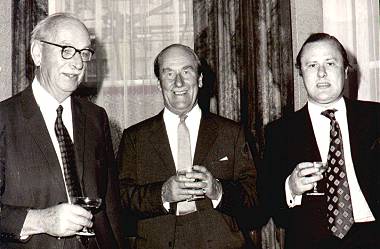
Herbert
Maxwell Findlater, Quentin and his son, John Findlater.
|
William (1792-1881) started
life in Greenock as a ship-broker, but moved to Londonderry. He was the father
of Sir William Huffington Findlater, MP (1824-1906), who founded William Findlater
& Co, Solicitors and who left Victor (1880-1957), an Indian army colonel,
who had two sons, both colonels, Quentin (1905-1993) and Dick (1909-1964). Quentin
left a daughter Mary (b 1947), unmarried, and two sons John (b 1940), a stockbroker,
with three children and Patrick (b 1945), for long a director of Balfour Williamson,
with a son Alexander. Dick had one child, Richard, who is a partner in Arthur
Young’s and has three children.
ALEXANDER FINDLATER,
JP, the founder
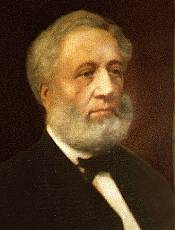 However
the most famous of this family was Alexander Findlater, JP (1797-1873). As a
lad in Greenock, he worked for his elder brother William in shipbroking. It
is recorded that he saved the life of a child who was drowning in the dock.
However
the most famous of this family was Alexander Findlater, JP (1797-1873). As a
lad in Greenock, he worked for his elder brother William in shipbroking. It
is recorded that he saved the life of a child who was drowning in the dock.
He sailed for Newfoundland,
where he was a merchant, before setting up as a wine merchant in Dublin, founding
in 1827 the firm Alexr Findlater & Co, which he ran with his youngest brother
Adam Seaton (1808-1879). Alexander never married, Adam Seaton married but had
no children.
Their sister Susanna, widow of Captain John Snowden (d 1847) kept
house for them at The Slopes, Kingstown (now Dun Laoghaire.) Having no direct
succession, they called over from Liverpool the family of their brother Captain
John on the death of his widow in 1837.
CAPTAIN JOHN FINDLATER
Captain John (1802-1836)
became a Master Mariner and sailed out of Liverpool. He was brought up in Greenock,
a sea-port. By the age of twenty-five, he was already a mariner, and is so described
in his marriage lines.
Home from a voyage in 1827,
he determined to wed Mary Ann Hughes before sailing off again. He had no time
to have the Banns called and in any case, as she was under the age of twenty-one,
she would need the consent of her father, which would not be forthcoming. So
on 16th April 1827 he travelled the forty miles to Chester, to obtain a special
licence from the Bishop. This would allow the marriage to take place without
Banns, both reducing any delay and also avoiding any publicity, both important
considerations in this situation. He himself was of full age, being born in
1802, but he represented to the episcopal courtier who issued the licence that
Mary Ann was also of full age; expedient but not true. At all events they were
married two days later on 18th April at Christchurch, Hunter Street, not by
the minister, but by the curate, perhaps again to ensure secrecy.
It is interesting to see
that Mary Ann’s sister Ellen was also married at Christchurch in the following
year, also under age, in fact at only 16. However the misrepresentation of Mary
Ann’s age would not invalidate the marriage ceremony, as the theological
position was and still is, that if they truly believed themselves to be marrying,
then they were truly married before God.
The first child John was
born in the following year. The first three children were born in Liverpool,
John in a very small house in Wolfe Street, Toxteth Park and Helen and Joseph
in a slightly larger house in Eldon Place near the docks just north of the city
centre. Both houses have been demolished, but it is clear from the street plan
than they were not big. But we must remember that at the age of twenty-five
not many of us live in large houses.
In 1834 he became a partner
in the purchase of the brig the James Laurie. This had been a Spanish schooner,
called the ‘Volez Mariana’, sequestrated as a slave-trader. He bought
it jointly with John Claypole, described as a shipowner. Claypole held thirty-three
shares and Findlater, now described as Master Mariner, held thirty-one. There
are two bills of sale dated 26th July 1834 showing that they bought the schooner
from John Hamilton, a merchant in Freetown, Sierra Leone, by his attorneys James
Laurie, William Hamilton and James Rutherford Laurie, all merchants of the City
of London. Presumably the new name of the ship came from one or more of these
attorneys. However on 6th March 1835, less than a year later, Findlater sold
his share in the ship to Claypole. This was probably after the expense of lengthening
and refitting the schooner as a brig.
The James Laurie is shown
in the 1836 edition of Lloyd’s Register as being ‘Ship: Laurie Bg
(brig), missing c 1835; Master: Findlater; Tons: 166; Build: Prize, O.P.P &
RP (oak, pitch pine and red pine) len. (lengthened) & nearly rebuilt (18)35
Restored 1835; Port: Liverpool; Destined Voyage: Liv. St. Tho.; No of Years
first assigned: - 4 yrs; Character for Hull & Stores: A1 (18)35’.
From the Bill of Entry of
the Liverpool Customs dated Saturday January 3, 1835, in the Ships loading section
we find ‘Dec 23; Nassau; James Laurie; J Findlater; B 166 G; J Claypole’.
It was on 27th March 1836 that he was lost at sea off the island of Abaco, Little
Bahamas near Nassau when the James Laurie went down with all hands. He was aged
only thirty-three.
His wife Mary Ann was left
with the four tiny children and was herself suffering from consumption. She
moved to the Wirral, just on the other side of the Mersey from Liverpool and
settled at Seacombe, near her sister (name still unknown), who had married Hugh
Gorman. Probably she lived there for the clean atmosphere, in what was then
a genteel and desirable area. She died of consumption the following year on
19th December 1937. She was only thirty and the four children were left orphans,
aged from four to eight years old.
JOHN FINDLATER, JP
They were brought up by
their Aunt Susanna, the wife of John Snowden, who was also a Captain like their
father. Alexander the Founder is recorded making regular payments to Susanna.
 The
elder son John (1828-1908) was trained up to run the firm, while the second
son Joseph (1831-1912) ran the London office with his first cousin and brother-in-law,
Col John Findlater Corscaden, who had married the elder daughter, Helen. Neither
Corscaden nor Joseph had children, so they took into partnership Bruce Beverley
Todd, whose descendants ran the firm, which was incorporated as Findlater, Mackie
Todd & Co Ltd, until they sold out in 1968.
The
elder son John (1828-1908) was trained up to run the firm, while the second
son Joseph (1831-1912) ran the London office with his first cousin and brother-in-law,
Col John Findlater Corscaden, who had married the elder daughter, Helen. Neither
Corscaden nor Joseph had children, so they took into partnership Bruce Beverley
Todd, whose descendants ran the firm, which was incorporated as Findlater, Mackie
Todd & Co Ltd, until they sold out in 1968.
John Findlater, JP (1828-1908),
nephew of Alexr the founder, reigned for thirty-five years in Sackville Street
from 1873 to 1908 when he died at the age of eighty. His eldest son Adam Seaton
II (1860-1911) followed for a few years but died aged 51 and then his fifth
son William (1867- 1941) handed over in turn to his son George Dermot (1905-1957),
who handed over to his son William Alexander (b 1937). The firm was sold in
1968 to Weston’s and Alex refounded the business as Findlater Wine Merchants
Ltd in 1970. Alex had two sisters, Grania and Suzanne, and a younger brother,
John, who worked for Guinness, married and has two sons, Jan Willem and Stephen,
who will carry on the line in Ireland.
John Findlater, JP had a
large family, six sons surviving to manhood and two daughters, both dying unmarried.
Adam Seaton ran the firm but died in 1911 aged 51; John went to Texas; Alexander
became a doctor in Edgware; William stayed put and took over on the death of
his eldest brother; Charlie was unmarried and killed in 1916 in the Somme and
Herbert Snowden, named after his Aunt Snowden, was also killed in the Great
War in 1915, as one of ‘the Pals’ at Suvla Bay, Gallipoli.
Dr ALEXANDER FINDLATER,
DSO, MD
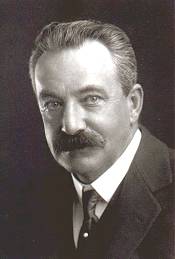 Alex
Findlater, the third son, trained to be a doctor. He graduated from TCD in 1880
and gained his MD in 1883. Alex married a great beauty, Emmie Donnelly and had
an only daughter, Helen, who never married.
Alex
Findlater, the third son, trained to be a doctor. He graduated from TCD in 1880
and gained his MD in 1883. Alex married a great beauty, Emmie Donnelly and had
an only daughter, Helen, who never married.
Dr Alex was a man of short
stature but considerable presence and was much loved. Initially he practised
in Aldburgh, Norfolk, where Helen was born. He then moved to Edgware, Middlesex.
He was greatly respected, for he practised before the introduction of the NHS
and as often as not made no charge to his poorer patients even ordering a quart
of milk to be sent from the farm when he felt it necessary. When the NHS was
introduced in primitive form he counted it a bonus as his paying patients more
than quadrupled.
Bernard Shaw, then in his
hey-day, tells the tale that when cycling in the locality, he fell off his bicycle
and being treated by Dr Findlater, recognised a fellow countryman and explained
that his name was Bernard Shaw. The doctor replied laconically that his name
was Alex Findlater. This impressed Shaw enough for him to write an article on
it in the Saturday Review.
On the doctor's death in
1931, the route to the funeral cortege was lined for over two miles by most
of the inhabitants of Edgware and in 1976 he was still remember. written by
Alexander John Maxwell Findlater
HERBERT
SNOWDEN FINDLATER and his descendants
Return
to Findlater Genealogy

 The
eldest child of Alexr Findlater and Christian Brodie was Revd Alexander, Minister
of Hamilton, who was born in 1666. Coming from a family of twelve, he himself
had a family of ten, with one or two by-blows as well. He married well, Jean
the daughter of Revd Thomas Kirkcaldy, the second son of the Laird of Grange.
Only one son of Revd Alexander Findlater was a minister, Thomas who was minister
of West Linton, Peebleshire. He was succeeded in turn by his son Revd Charles,
who was later minister of Newlands, near Peebles. Two sons, Alexander and Robert
were schoolmasters, Alexander in Montrose and then at Edinburgh High School,
and Robert in Hamilton.
The
eldest child of Alexr Findlater and Christian Brodie was Revd Alexander, Minister
of Hamilton, who was born in 1666. Coming from a family of twelve, he himself
had a family of ten, with one or two by-blows as well. He married well, Jean
the daughter of Revd Thomas Kirkcaldy, the second son of the Laird of Grange.
Only one son of Revd Alexander Findlater was a minister, Thomas who was minister
of West Linton, Peebleshire. He was succeeded in turn by his son Revd Charles,
who was later minister of Newlands, near Peebles. Two sons, Alexander and Robert
were schoolmasters, Alexander in Montrose and then at Edinburgh High School,
and Robert in Hamilton.
 However
the most famous of this family was Alexander Findlater, JP (1797-1873). As a
lad in Greenock, he worked for his elder brother William in shipbroking. It
is recorded that he saved the life of a child who was drowning in the dock.
However
the most famous of this family was Alexander Findlater, JP (1797-1873). As a
lad in Greenock, he worked for his elder brother William in shipbroking. It
is recorded that he saved the life of a child who was drowning in the dock. The
elder son John (1828-1908) was trained up to run the firm, while the second
son Joseph (1831-1912) ran the London office with his first cousin and brother-in-law,
Col John Findlater Corscaden, who had married the elder daughter, Helen. Neither
Corscaden nor Joseph had children, so they took into partnership Bruce Beverley
Todd, whose descendants ran the firm, which was incorporated as Findlater, Mackie
Todd & Co Ltd, until they sold out in 1968.
The
elder son John (1828-1908) was trained up to run the firm, while the second
son Joseph (1831-1912) ran the London office with his first cousin and brother-in-law,
Col John Findlater Corscaden, who had married the elder daughter, Helen. Neither
Corscaden nor Joseph had children, so they took into partnership Bruce Beverley
Todd, whose descendants ran the firm, which was incorporated as Findlater, Mackie
Todd & Co Ltd, until they sold out in 1968. Alex
Findlater, the third son, trained to be a doctor. He graduated from TCD in 1880
and gained his MD in 1883. Alex married a great beauty, Emmie Donnelly and had
an only daughter, Helen, who never married.
Alex
Findlater, the third son, trained to be a doctor. He graduated from TCD in 1880
and gained his MD in 1883. Alex married a great beauty, Emmie Donnelly and had
an only daughter, Helen, who never married.